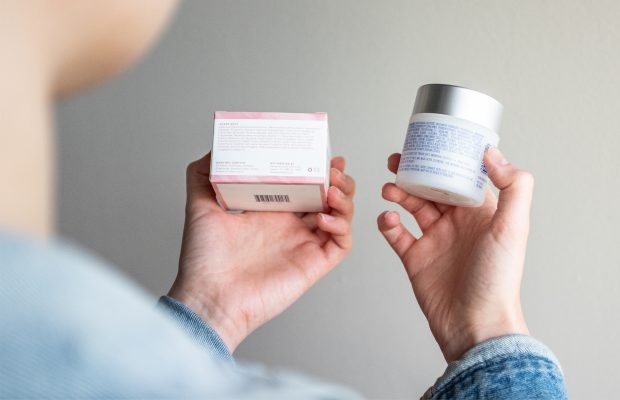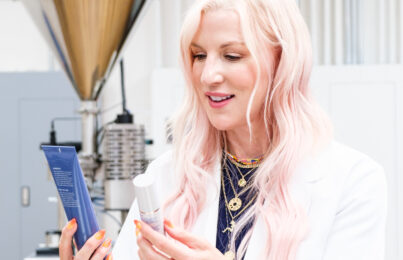There’s no doubt that putting together and maintaining a skincare routine can be an expensive endeavor. This leads many people down the path of skincare dupes. A dupe, or duplicate, is a product that matches the look, feel, main ingredients, and results of a (usually) more expensive product on the market.
- What Does it Take for a Product to Be Considered a Dupe?
- Can I Tell If a Product Is a Dupe by Comparing Ingredient Labels?
- Are Skincare Brands Allowed to Create a Dupe of Any Product?
- So What’s the Best Way to Go About Finding Skincare Dupes?
- Does a Skincare Product Really Need to Cost More to Work Better?
In this post, I’ll address whether dupes are real or a myth, how to find them, and when you should splurge on your skincare. I also spoke with Valerie George, cosmetic chemist and co-host of Beauty Brains Podcast, for her point of view on skincare dupes.
What Does it Take for a Product to Be Considered a Dupe?
First thing’s first: skincare dupes are definitely a real thing.
“As a cosmetic chemist, I encounter this all the time,” Valerie says. “Brands that are usually in a lower price bracket are inspired by other successful products on the market, which are sold in a higher price bracket. As a chemist, I’m asked to mimic the appearance, function, marketing ingredients, and sometimes fragrance to create a dupe of a product.”
Valerie notes, however, that it takes more than just a few key ingredients for a product to be considered a dupe. (For example, you couldn’t simply compare two exfoliating masks that both use AHAs and bromelain enzymes and say they’re dupes of each other.) They have to be close enough in appearance and skin feel that someone would be completely satisfied with the whole experience and performance of a product.
Can I Tell If a Product Is a Dupe by Comparing Ingredient Labels?
Short answer—no. If you’ve read my blog before, you already know my stance that you can’t judge a product based on the ingredient label. There are too many factors at play: quality of ingredients, percentage of ingredients used, type of delivery system used for active ingredients, and the pH of a product, to name a few. These can all make a HUGE difference when it comes to the actual performance of a skincare product, and none of these things can be gleaned from reading a label.
Let me give you an example. Dimethicone is a popular type of silicone used in lots of different skincare products. As I mentioned in this post about silicones, dimethicone can come in many different weights. This can make a huge difference in the texture of a product. Dimethicone can feel really emollient or occlusive at certain weights, while at others it may feel dry and evaporate almost immediately. Even as a product formulator like myself, or a cosmetic chemist like Valerie, you can’t see dimethicone on an ingredient label and know which weight was used.
There are so many nuances like this when it comes to product formulations. Believe me when I say the ingredient label is only one piece of the puzzle.
Are Skincare Brands Allowed to Create a Dupe of Any Product?
Sometimes you can’t create a dupe for a particular product, and that’s because it’s protected by a patent. A patent is a legal right to exclude other people and/or brands from making and selling an invention. Patents last for 20 years from the date of filing (unless the person or brand makes advancements on the original invention, in which case they can file another patent).
A good example of a skincare product that has a patent is the SkinCeuticals C E Ferulic serum. L’Oreal, the company that owns SkinCeuticals, filed a patent for it in 2005 to protect their stabilized ascorbic acid (vitamin C) composition. Nobody can use that exact technology unless they license it from L’Oreal.
If a brand uses the technology, or, in other words, creates a true dupe of the C E Ferulic, they could be at risk for patent infringement. This can be very serious and expensive, which is why many brands rely on chemists, like Valerie, as well as regulatory teams, to ensure they aren’t infringing on existing patents.“Sometimes, the reality is that dupes can’t be put on the market until those patents fall away,” Valerie says. “A lot of the products we use today are old patent technologies that have expired and then everyone starts using them and then it just becomes status quo.”
The SkinCeuticals patent extends through March 2025. After that, “the world better be ready,” Valerie says. “We’re going to get an explosion of vitamin C E ferulic serums. Most skincare companies take two to three years to launch something in their innovation pipeline so I bet you coming up shortly people will be planning to launch this product.”
So What’s the Best Way to Go About Finding Skincare Dupes?
First off, I would caution against using online tools that claim to compare products and match dupes. Since these rely almost solely on ingredient labels, I’m not a fan. For all the reasons I mentioned above, there’s no way you can get accurate information as to whether one product is a duplicate of another through the algorithm these tools use.
Valerie agreed with me, saying, “I looked up products I’ve personally formulated and that I know inside and out, and I looked at the products they recommended as dupes (most of which I’ve also used). For the most part, I couldn’t believe what was being recommended because they’re not similar at all.”
Unfortunately, the only real way to tell is through trial and error. Some things you can certainly research beforehand, including the look of a product, its main function, marketing claims, and key ingredients. But at the end of the day, a true dupe also comes down to the human experience and whether or not you’re happy with how a product performs. Word of mouth is probably the easiest way to find dupes, so I’d ask around via social media or online forums. But, keep in mind that just because a product worked for someone else doesn’t mean it will work for you.
Does a Skincare Product Really Need to Cost More to Work Better?
The answer to this question isn’t always black and white, and I would say it depends on what kind of product you’re looking at.
Price is more likely to matter when you’re looking at products that contain truly active ingredients. This includes things like vitamin C, peptides, and retinol. These performance ingredients can be really expensive and need to be used at certain levels to be efficacious, all of which translates to a product costing more money. For example, if a company uses a peptide that costs a few thousand dollars per pound and it needs to be used at 2% to give results, this is going to drive up the cost of the product so the seller can make a decent margin. Logically speaking, if you buy an inexpensive peptide cream at the drugstore, it isn’t going to be as effective or as high quality because of that cost margin.
That said, don’t be fooled into thinking expensive always means better. Some companies charge a lot based on nothing but nice-looking packaging and inflated marketing claims. Products like cleansers, toners, and moisturizers can definitely be of good quality even if they don’t come with a hefty price tag. My best advice is to buy your products from a company that has good transparency so you know they’re doing the right thing when it comes to product formulation.
When Should I Splurge on Skincare?
At the end of the day, the results you get from skincare don’t come from a single product but from a well-rounded routine. This is a big part of why I created my 9 skin types and why I’m so passionate about them; our skin needs a variety of products and ingredients to be healthy. For this reason, I don’t usually recommend that people sink hundreds of dollars into one “hero” product. Your skin has multiple needs, and these can rarely be addressed by a single product.
If you are trying to decide where to spend a little more money though, I’d go with a serum since they usually contain active or performance ingredients. It’s so important that the active ingredients you use are high-quality and effective because this is what gives you the most dramatic, visible results.
This isn’t to say your cleanser, alcohol-free toner, and moisturizer aren’t very important parts of your routine, but it is possible to get well-formulated products in these categories on a budget. (Here’s what to look for in a facial cleanser.)
So there you have it, an insider look into the world of skincare dupes! There are plenty out there, but the unfortunate truth is that they can be hard to identify without comparing two products for yourself. Ingredient lists are unreliable, and at the end of the day similarity in experience and results is what really matters.
Next, read about ingredient percentages and what product labels won’t tell you.
Celebrity Esthetician & Skincare Expert
As an esthetician trained in cosmetic chemistry, Renée Rouleau has spent 30 years researching skin, educating her audience, and building an award-winning line of products. Her hands-on experience as an esthetician and trusted skin care expert has created a real-world solution — products that are formulated for nine different types of skin so your face will get exactly what it needs to look and feel its best. Trusted by celebrities, editors, bloggers, and skincare obsessives around the globe, her vast real-world knowledge and constant research are why Marie Claire calls her “the most passionate skin practitioner we know.”



